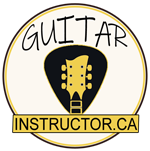
Navigating the Neck: Effective Guitar Music Theory Lessons for Improvisers
Introduction
For many guitar players, navigating the neck of the guitar can be a daunting task. With so many notes, scales, and chords to choose from, it can be overwhelming to know where to begin. This is where music theory comes into play.
Guitar music theory can provide a roadmap for navigating the neck of the guitar, allowing players to improvise with confidence and creativity. In this article, we will explore some effective guitar music theory lessons for improvisers, focusing on how to navigate the neck of the guitar with ease.
Understanding the Basics of Music Theory
Before diving into specific guitar music theory lessons, it is important to have a solid understanding of the basics of music theory.
Music theory is the study of the structure and elements of music, including harmony, melody, rhythm, and form. For guitar players, understanding music theory can provide a framework for improvisation, helping to make sense of the notes and scales on the fretboard.
One of the most important concepts in music theory is the major scale. The major scale is the foundation for many aspects of music theory, including chords, harmony, and melody. Understanding the major scale and its intervals is crucial for navigating the neck of the guitar and creating effective improvised solos.
Another key aspect of music theory for guitar players is understanding chords and chord progressions. Chords are the building blocks of music, and understanding how they fit together in a progression is essential for creating compelling improvisations.
Learning to identify chords and chord progressions on the fretboard can help guitar players navigate the neck with confidence and skill.
Finally, understanding scales and modes is essential for navigating the neck of the guitar. Scales provide the raw materials for improvisation, and learning different scales and modes can open up a world of creative possibilities for guitar players.
By understanding the patterns and intervals of scales, guitar players can navigate the neck with ease and precision.
Turn up the volume on your skills! Get started with Electric Guitar Lessons in Edmonton and rock out like a pro.
Applying Music Theory to the Guitar
Once guitar players have a solid understanding of the basics of music theory, they can begin to apply these concepts to the guitar. One effective way to do this is by learning to play scales and modes in different positions on the neck.
By mastering scales and modes in different positions, guitar players can navigate the neck with ease and fluidity, allowing for more creative and expressive improvisations.
Another important aspect of applying music theory to the guitar is learning to identify and play chords and chord progressions in various positions on the neck.
By learning to play chords and chord progressions in different positions, guitar players can expand their harmonic vocabulary and create more interesting and compelling improvisations.
In addition to scales, modes, and chords, understanding the relationship between these elements is crucial for effective improvisation. By understanding how scales and chords relate to each other, guitar players can navigate the neck with confidence and creativity, creating melodic and harmonic interest in their improvisations.
Effective Guitar Music Theory Lessons for Improvisers
With a solid understanding of music theory and how to apply it to the guitar, improvisers can take their playing to the next level by focusing on specific guitar music theory lessons. Here are some effective guitar music theory lessons for navigating the neck:
Lesson 1: Learning the CAGED System
One effective way to navigate the neck of the guitar is by learning the CAGED system. The CAGED system is a method for organizing and visualizing the neck of the guitar, allowing players to navigate the fretboard with ease.
By learning the five basic chord shapes of C, A, G, E, and D, guitar players can create a roadmap for navigating the neck and improvising with confidence.
Lesson 2: Understanding Diatonic Harmony
Diatonic harmony is a fundamental concept in music theory, and understanding how it applies to the guitar can be immensely beneficial for improvisers.
By learning to identify and play diatonic chords and chord progressions in different positions on the neck, guitar players can create more interesting and compelling improvisations.
Lesson 3: Mastering the Modes
Modes are an essential aspect of music theory for guitar players, and mastering the modes can open up a world of creative possibilities.
By learning to play different modes in different positions on the neck, guitar players can create melodic and harmonic interest in their improvisations, allowing for more expressive and dynamic playing.
Lesson 4: Understanding Chord-Scale Relationships
Understanding the relationship between chords and scales is essential for effective improvisation. By learning to identify and play scales that fit over different chords and chord progressions, guitar players can create melodic and harmonic interest in their improvisations, allowing for more dynamic and compelling playing.
Lesson 5: Creating Melodic and Harmonic Interest
Ultimately, the goal of effective guitar music theory lessons for improvisers is to create melodic and harmonic interest in their playing. By understanding music theory and how to apply it to the guitar, improvisers can navigate the neck with confidence and creativity, creating compelling and expressive improvisations.
Your musical journey starts here! Join our Guitar Lessons in Edmonton and start playing like a pro.
Conclusion
Navigating the neck of the guitar can be a daunting task, but with effective guitar music theory lessons, improvisers can navigate with confidence and creativity.
By understanding the basics of music theory and how to apply it to the guitar, improvisers can learn to navigate the neck with ease, creating more interesting and compelling improvisations.
By focusing on specific guitar music theory lessons, such as learning the CAGED system, understanding diatonic harmony, mastering the modes, and creating melodic and harmonic interests, guitar players can take their improvisations to the next level.
With a solid understanding of music theory and effective guitar music theory lessons, improvisers can navigate the neck of the guitar with ease and confidence, creating melodic and harmonic interest in their playing.
[ad_2]
